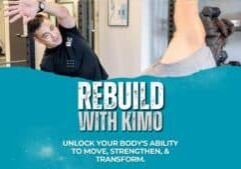 It has been the status quo for decades… When you’re hurt: rest, ice, compression, elevation. In recent years, though, research and experience have started to question this recipe. Naturally, there’s a lot of speculation floating around these days, so we wanted to provide a clear take on the big question: Should I ice?
It has been the status quo for decades… When you’re hurt: rest, ice, compression, elevation. In recent years, though, research and experience have started to question this recipe. Naturally, there’s a lot of speculation floating around these days, so we wanted to provide a clear take on the big question: Should I ice?
Should I Ice?
The answer: it depends!
I know, really clear, right? Well, it all depends on 3 things:
- The nature of the injury
- The Location
- Other treatments being administered
This is as simple as we can make it:
Do Ice:
- Acute injuries…but not too much or too soon!
With an acute injury, you will see lots of swelling (inflammation). It is a normal and healthy reaction to injury, it’s your body’s way of healing and cleaning up the mess. You don’t want to stop healing! You should be giving the body part adequate rest and compression during this time, though. Especially in the limbs where swelling tends to pool and not recirculate due to gravity. Swelling is good but should act as a constant rinsing, flushing in good stuff and flushing out the bad. If you sprain your ankle but continue to spend 8 hours a day walking on it, gravity is going to make the swelling sit in your ankle. Not helpful. So if you’re not taking good care of your ankle, ice and elevation may help your body through this process. It’s self-sustaining if you are resting as you should be.
Also, don’t think that ice is going to magically heal your injury Icing all day long is not helpful and can actually hinder the healing process explained above. Only ice an acute injury if:
-
- You are re-insulating the area (not resting like you’re supposed to) and/or
- It has an alarming amount of swelling (baseball to softball size).
- Post-surgery
This has the same general guidelines as the “acute injury” explained above, plus a little more. Surgery hurts, it’s an extreme version of an acute injury. Pills help but aren’t 100% effective or ideal. Ice can numb an area that is painful, helping you to sleep and go about your day without being miserable. I’ve been there with knee surgery, if it wasn’t for a little ice and Ibuprofen, I probably wouldn’t have slept…which is bad for healing!
- Pain ModerationIf ice is the only thing that stops your pain, then it’s the only thing that stops your pain! You need to get through your day and ice is better compared to any kind of drugs. Just makes sure, again, that you aren’t relying on ice to fix you pain. You still need other help.
Don’t Ice:
- Chronic overuse conditions, i.e. tendinosis/tendonitis, fasciitis, spasms. Read above. Unless you’ve got an unnecessary amount of swelling or need pain management, icing isn’t going to increase healing. Particularly in chronic, overuse condition swelling isn’t a cause, it’s a symptom, and just treating the symptom without treating the cause is pointless.
- For more than 20 minutes at a time. After 20 minutes, the blood flow actually reverses and increases inflammation.
- Infections. You want inflammation to bring white blood cells to the area to fight the infection, gentle heat is a better choice.
Injury-Proof Your Body: How the REBUILD Program Can Help You Prevent Future Pain and Injury
We all know the frustration of an injury that sidelines us from the activities we love. Whether it’s a nagging backache that keeps you from your favorite sport or a sudden sprain that throws off your daily routine, pain and limitations can significantly impact our quality of life. But what if there was a way…
Read MoreBalancing Act: The Impact of Sports Injury Clinics on Work-Life Balance.
Explore how a sports injury clinic can improve your work-life balance in our blog ‘Balancing Act: The Impact of Sports Injury Clinics on Work-Life Balance’.
Read MoreAre Corrective Exercises Effective in Injury Recovery?
Explore the effectiveness of corrective exercises in injury recovery in our blog ‘Are Corrective Exercises Effective in Injury Recovery?’
Read MoreAdvanced Chiro Rehab Techniques: A Revolution in Pain Management
Discover groundbreaking chiro rehab techniques transforming pain management in our blog ‘Advanced Chiro Rehab Techniques: A Revolution in Pain Management’.
Read MoreUnderstanding the Importance of Spinal Rehab for Back Pain
Discover the crucial role of spinal rehab in managing back pain in our insightful blog ‘Understanding the Importance of Spinal Rehab for Back Pain’.
Read MoreExercises You Can Do at Home after a Visit to the Chiropractic Clinic
Stay active at home with exercises from ‘Exercises You Can Do at Home after a Visit to the Chiropractic Clinic’.
Read More





